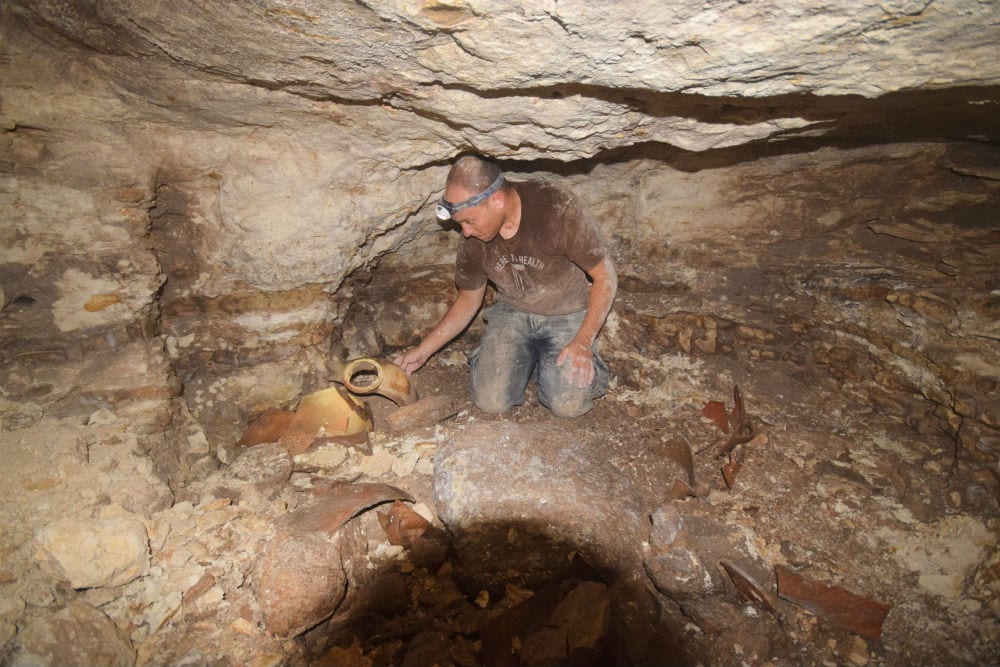More than 200 Jerusalem 11th graders unearthed a 2,000-year-old Jewish settlement, dating to the Second Temple Era, near Beit Shemesh.
The students, from Jerusalem’s Boyer High School, volunteered on the archaeological dig in order to raise funds for a class trip to Poland. They discovered the ancient village, including an extensive complex of ritual baths (mikvehs) and underground hiding shelters, in collaboration with a team of Israeli archaeologists. The shelters may have hidden Jews fighting the Roman Empire during the the Bar-Kokhba Revolt.

One student, Shelly Kozlovich, said, “It’s fantastic that we, Israeli students in the 21st century, have the opportunity to learn about the country and to unearth a Jewish community from 2000 years ago with our own hands.
“With the money we’re making, we’ll pay for our trip to Poland and learn there about the Holocaust – an event that had a huge influence on Israel’s establishment. It’s a great way of bringing it all full circle.”

Israel Antiquities Authority (IAA) Director Israel Hasson explained that the Authority regularly invites schools to participate in digs to help instill awareness of their heritage as well as to reduce reducing travel costs for educational trips.
The settlement, whose ancient name is unknown, has so far yielded eight ritual baths, cisterns, and refuges, along with rock-hewn industrial installations. The houses themselves have not survived and their stones were apparently taken to construct buildings in later periods.
“The settlement’s extraordinary significance lies in its imposing array of private ritual baths, which were incorporated in the residential buildings,” said Sarah Hirshberg, Shua Kisilevitz and Sarah Levevi-Eilat, IAA excavation directors.

“Each household had its own ritual bath and a cistern. Some of the baths uncovered are simple and others are more complex and include an otzar, or collecting basin, into which the rainwater would drain. It is interesting to note that the local inhabitants adhered strictly to the rules regarding purity and impurity,” said the excavation directors.
The Bar-Kokhba Revolt (132-135 C.E), or Second Jewish Revolt, followed years of clashes between Roman forces and Jews in Jerusalem and the surrounding area. Jewish forces were ultimately defeated by Roman general Sextus Julius Severus.
Students also discovered intact ceramic jars and cooking pots that were probably used by the rebels. The finds show that Jewish settlement continued in the region, decades even after the destruction of Jerusalem in 70 CE.

The excavations are being carried out with funding from the Ministry of Construction and Housing prior to the building of a new residential neighborhood in Ramat Beit Shemesh, in cooperation with the IAA and with the participation of pre-army course cadets.
“Past and present are coming together in a city that has known division and now lives in harmony,” concluded Minister of Construction and Housing, Yoav Galant.
“There is nothing more positive than the fact that students learning about the attempt to annihilate their people are involved in strengthening our ties with Israel and remembering the generations of the past.”




